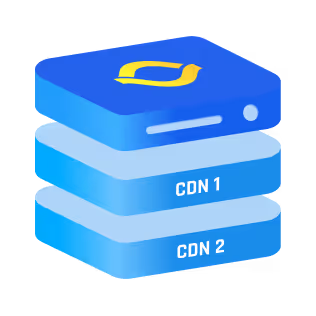When you browse the web, shop online, or even send an email, there's a hidden process working in the background to keep your data safe. This process is SSL/TLS encryption. It's what creates that little padlock symbol you see in your browser.
It’s how many browsers on the internet verify the authenticity of a website, and determine how secure it is. But that’s not all it does:
What is SSL/TLS Encryption?
SSL/TLS encryption is a way to protect data as it travels over the internet. Think of it like a secure envelope for your digital information, ensuring that no one can tamper with it or read it while it's in transit.
- SSL (Secure Sockets Layer): This was the original encryption protocol designed to secure internet communications.
- TLS (Transport Layer Security): The modern successor to SSL, offering stronger encryption and security improvements.
Today, when we say SSL, we're often referring to TLS, even though they’re technically different.
Websites and apps rely on this encryption to keep your data, such as passwords, credit card numbers, and personal messages, safe from prying eyes.
Approximately 90% of the world's HTTP traffic is secured over TLS/SSL, indicating a significant move towards a fully encrypted we
How Does SSL/TLS Encryption Work?
Let’s simplify it: imagine you’re sending a letter, but you don’t want anyone else to read it. Here’s how SSL/TLS encryption makes that happen:
- Handshake Process:
When you connect to a website, your browser and the website's server do a little "handshake" to agree on how to encrypt the data. This includes exchanging cryptographic keys, which act as the "lock and key" system. - Encryption:
Once the handshake is done, the actual encryption begins. All the data exchanged between you and the server is scrambled (encrypted) so that only you and the server can understand it. - Decryption:
When the server sends data back to you, your browser uses the agreed key to unscramble (decrypt) the information, making it readable again.
This process happens almost instantly and is invisible to you, ensuring a smooth and secure experience.
{{cool_component}}
Why Does SSL/TLS Encryption Matter?
Without SSL/TLS encryption, your sensitive information would be like a postcard—easy for anyone to read. Here’s why it’s essential:
- Prevents Eavesdropping: Hackers can’t intercept and read your data.
- Protects Against Tampering: Ensures your data isn’t altered during transmission.
- Builds Trust: Websites with SSL/TLS encryption (indicated by HTTPS) show users they’re secure.
SSL Encryption Types
There are different types of SSL/TLS certificates, each serving a specific purpose. Let’s go over them:
- Domain Validation (DV):
- Verifies the ownership of the domain.
- Basic security, often used for small websites or blogs.
- Organization Validation (OV):
- Verifies the domain and the legitimacy of the organization behind it.
- Suitable for businesses.
- Extended Validation (EV):
- Offers the highest level of security by thoroughly vetting the organization.
- Displays the organization name in the browser bar, signaling high trust.
- Wildcard Certificates:
- Secures a domain and all its subdomains (e.g., *.example.com).
- Multi-Domain Certificates:
- Secures multiple domains under one certificate.
Each type comes with its own level of SSL security, so it’s important to choose the right one based on your needs.
Common SSL Encryption Methods
SSL/TLS relies on a few key encryption methods to keep data safe:
- Symmetric Encryption:
- Both parties (your browser and the server) use the same key to encrypt and decrypt data.
- Fast and efficient but less secure on its own.
- Asymmetric Encryption:
- Uses a pair of keys: a public key for encryption and a private key for decryption.
- More secure but slower.
- Hashing:
- Converts data into a fixed-length string of characters, ensuring it hasn’t been tampered with.
- One-way encryption, meaning it can’t be reversed.
SSL/TLS combines these methods to create a robust and secure system.
SSL Encrypted Traffic in Action
Whenever you visit a website with HTTPS, you’re experiencing SSL encrypted traffic.
This ensures that everything you do—whether browsing, entering your password, or making a payment—is secure.
For example:
- Shopping on an e-commerce site: SSL encryption protects your credit card details.
- Logging into your email: Your username and password are encrypted during login.
- Streaming on a subscription service: Your viewing data remains private.
Without SSL encryption, all this information could be exposed to hackers or third parties.
How to Check if a Website Uses SSL/TLS Encryption
Here’s how you can quickly tell if a website is secure:
- Look for the Padlock Icon: Found in the address bar of your browser.
- Check the URL: It should start with https:// (the "s" stands for secure).
- View the Certificate: Click on the padlock to see details about the SSL certificate.
If you don’t see these signs, think twice before sharing sensitive information on that site.
Why Updating SSL/TLS is Crucial
Just like any technology, SSL/TLS protocols can become outdated. Using old versions like SSL 2.0 or SSL 3.0 exposes users to vulnerabilities.
Modern websites should rely on TLS 1.2 or TLS 1.3 for optimal security.
Setting Up SSL/TLS Encryption for Your Website
If you’re running a website, enabling SSL/TLS encryption is easier than you might think:
- Purchase an SSL Certificate: Get it from a trusted Certificate Authority (CA).
- Install the Certificate: Your hosting provider can often help with this.
- Update URLs to HTTPS: Ensure all your site’s resources are served securely.
- Test Your SSL Setup: Use online tools to confirm your site’s encryption is working.
This not only protects your users but also boosts your site’s SEO ranking—search engines favor secure websites.
Wrapping It Up
SSL/TLS encryption is the backbone of internet security. It protects your personal information, ensures safe communication, and builds trust between users and websites. Whether you’re browsing, shopping, or running a website, SSL encryption methods are key to keeping your data safe.
So, next time you see that padlock icon or HTTPS in your browser, know that SSL encrypted traffic is hard at work behind the scenes, keeping everything secure.










